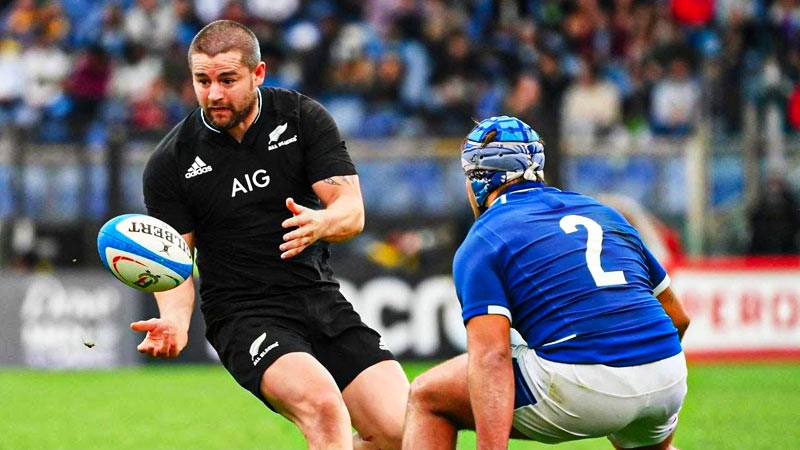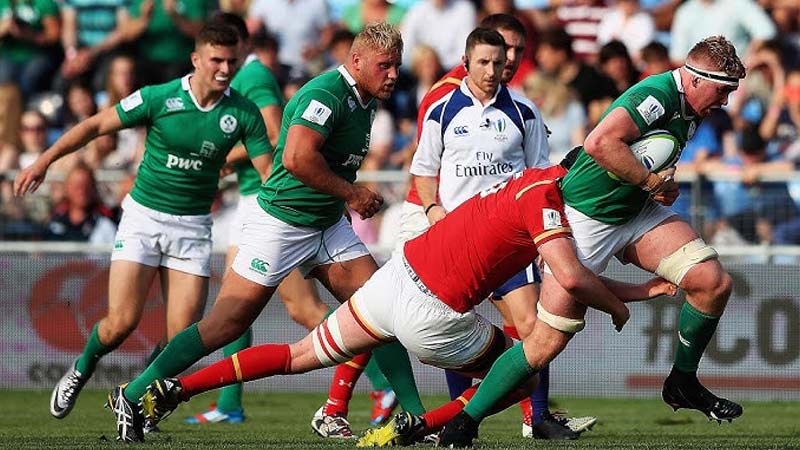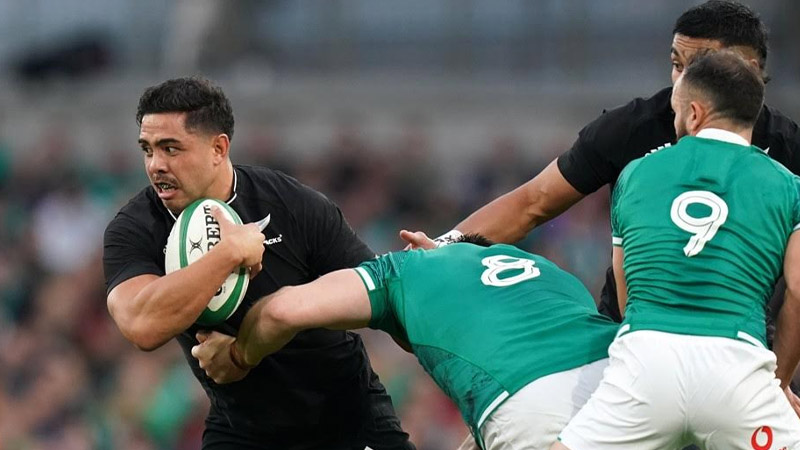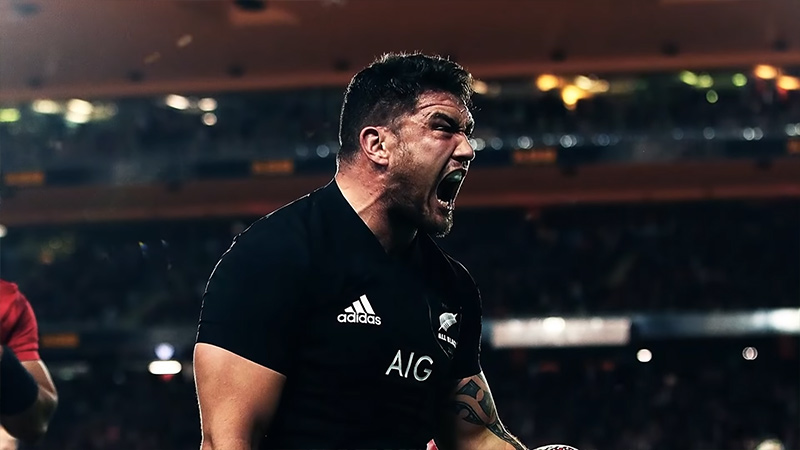In the dynamic world of rugby, where positions are defined by specialized roles and responsibilities, the term “hooker” takes on a distinct and crucial significance.
A hooker is not merely a player’s position but a role that embodies the essence of the forward pack, where strategy, strength, and precision converge.
This position, denoted by the jersey number 2, is not for the faint of heart; it requires a unique set of skills and attributes that are indispensable to a rugby team’s success.
The role of a hooker extends beyond the glamour of scoring tries or making game-winning tackles. It is a role deeply rooted in the core of the game, where set-piece mastery, tenacity, and versatility come to the forefront.
As we delve into the world of What is a Hooker in Rugby, we uncover the intricacies that define this position and the invaluable contributions it makes to the sport’s rich tapestry.
What Is A Hooker In Rugby?
In rugby, the term “hooker” refers to a specialized playing position within the forward pack. The hooker wears jersey number 2 and plays a pivotal role in both the scrum and lineout, two essential set-piece plays in the game.
Scrum
In the scrum, the hooker’s primary responsibility is to “hook” the ball backward with their foot. This skill involves using their foot to make contact with the ball and quickly sweeping it backward to their team.
The hooker binds tightly with their fellow forwards in the front row of the scrum, forming a strong, cohesive unit that aims to secure possession of the ball.
Lineout
During lineouts, the hooker is typically the player who throws the ball in. They must accurately throw the ball to their teammates, who lift or jump to contest the throw and gain possession. The hooker’s accuracy and timing are crucial in this aspect of the game.
Loose Play
In open play, hookers often participate in rucks and mauls, providing support and stability to their team’s ball-carrying efforts. They are also known for their tackling ability and work rate around the field.
The hooker’s role requires a combination of strength, technique, and agility, making them a vital contributor to a rugby team’s success. They are known for their tenacity and are often considered the engine room of the forward pack.
What Is The Average Size Of A Hooker In Rugby?

The average size of a hooker in rugby can vary depending on the level of play, the style of play, and the individual player.
Here are some average sizes of a hooker in rugby:
European Professional Rugby
According to a table by Rugby Roar1, the average size of a hooker in European professional rugby is 1.82 meters (5 feet 11 inches) in height and 106.3 kilograms (234 pounds) in weight. This is based on data taken from the Top 14, Premiership, and PRO14 competitions.
Rugby World Cup 2019
According to an article by The Guardian, the average size of a hooker in the Rugby World Cup 2019 was 1.83 meters (6 feet) in height and 108.4 kilograms (239 pounds) in weight. This is based on data from the 20 participating teams.
Super Rugby
According to an article by Stuff, the average size of a hooker in Super Rugby was 1.83 meters (6 feet) in height and 108 kilograms (238 pounds) in weight in 2017. This is based on data from the 18 participating teams.
Rugby League
According to an article by FluentRugby, the average size of a hooker in rugby league is between 1.68 meters (5 feet 6 inches) and 1.78 meters (5 feet 10 inches) in height and between 80 kilograms (176 pounds) and 90 kilograms (198 pounds) in weight. This is based on general observations of players and playing styles.
Women’s Rugby
According to an article by The Telegraph, the average size of a hooker in women’s rugby is around 1.7 meters (5 feet 7 inches) in height and around 80 kilograms (176 pounds) in weight. This is based on data from the England women’s team.
Schoolboy Rugby
According to an article by Rugby World, the average size of a hooker in schoolboy rugby is around 1.75 meters (5 feet 9 inches) in height and around 85 kilograms (187 pounds) in weight. This is based on data from the U18 Six Nations Festival in 2018.
Amateur Rugby
According to an article by Rugby Coach Weekly, the average size of a hooker in amateur rugby is around 1.8 meters (5 feet 11 inches) in height and around 95 kilograms (209 pounds) in weight. This is based on data from a survey of over 300 amateur players.
What Does A Hooker Do In Rugby?

Here are some characteristics that define the role of a hooker in rugby:
Set-Piece Expertise
Hookers are key players in both scrums and lineouts, the foundational set-pieces in rugby. In the scrum, the hooker’s primary role is to hook the ball back using their feet, ensuring possession for their team.
During lineouts, they are responsible for accurate throws to their teammates, requiring precise timing, technique, and communication to secure the ball.
Physical Strength
Hookers need exceptional physical strength, particularly in their upper body and core, to hold their position in the scrum. Their ability to withstand pressure and drive forward is crucial for the scrum’s stability, providing a solid platform for the team.
Ball-Carrying Ability
Beyond their set-piece duties, hookers are expected to contribute as ball carriers in open play. They use their strength and low body position to gain valuable meters, often acting as support runners in rucks and mauls, powering their team forward.
Defensive Prowess
Hookers are skilled defenders known for their tackling ability. Despite being in the forward pack, they are agile and quick, allowing them to make crucial tackles and disrupt the opposition’s momentum. Their physicality makes them effective in close-quarters defensive situations.
Work Rate And Endurance
Hookers maintain a high work rate throughout the game, involving themselves in various phases, including rucks, mauls, and open play. Their endurance allows them to cover substantial ground, ensuring they are present to support teammates and secure possession when needed.
Leadership And Communication
Hookers often serve as a link between the forwards and backs, relaying messages and coordinating plays. Their leadership qualities are vital, especially in directing the forward pack during set-piece plays and ensuring everyone is in sync with the game plan.
Versatility
While their primary role is centered around set pieces, hookers possess versatility. They are expected to adapt their game based on the team’s strategy, contributing both in structured plays and unstructured situations, showcasing their ability to think on their feet and make split-second decisions during the match.
In essence, a hooker’s multifaceted role in rugby demands a unique blend of skills, strength, and intelligence, making them indispensable assets to their teams.
Which Player Is Good At Playing Rugby Hookers?
There are many players who are good at playing rugby hookers, but here are some of the best ones based on their achievements, skills, and reputation:
Sean Fitzpatrick

He is widely regarded as one of the greatest hookers and captains of all time. He played 92 tests for New Zealand from 1986 to 1997, leading them to 51 wins in 63 matches as skipper.
He was a key member of the 1987 World Cup-winning team and the 1996 Tri-Nations-winning team. He was also a formidable scrummager, lineout thrower, and ball carrier.
Keith Wood
He is considered as one of the most dynamic and influential hookers in rugby history. He played 58 tests for Ireland from 1994 to 2003, scoring 15 tries, a record for a front-row player. He captained Ireland to their first win over France in Paris in 28 years in 2000.
He also played five tests for the British and Irish Lions in 1997 and 2001. He was renowned for his work rate, leadership, and attacking flair.
John Smit
He is one of the most successful and respected captains in rugby history. He played 111 tests for South Africa from 2000 to 2011, leading them to 46 wins in 83 matches as skipper.
He lifted the World Cup trophy in 2007 and the Tri-Nations trophy in 2004 and 2009. He was also a versatile player who could play as a hooker or a prop. He was known for his calmness, composure, and communication.
Bismarck Du Plessis
He is one of the most physical and aggressive hookers in rugby history. He played 79 tests for South Africa from 2007 to 2015, scoring 11 tries. He was part of the World Cup-winning team in 2007 and the Tri-Nations-winning team in 2009.
He was also a dominant player for the Sharks and Montpellier in club rugby. He was feared for his powerful scrummaging, ferocious tackling, and relentless rucking.
Dane Coles
He is one of the most skillful and creative hookers in rugby history. He has played 74 tests for New Zealand since 2012, scoring 12 tries. He was part of the World Cup-winning team in 2015 and the Rugby Championship-winning team in 2012, 2013, 2014, 2016, and 2017.
He was also a key player for the Hurricanes and Wellington in club rugby. He is admired for his speed, agility, and handling skills.
Raphael Ibanez
He is one of the most charismatic and inspirational hookers in rugby history. He played 98 tests for France from 1996 to 2008, leading them to 27 wins in 41 matches as captain.
He won consecutive Grand Slams with France in 1997 and 1998 and reached the World Cup final in
FAQs
What is the role of a hooker in rugby?
A hooker in rugby is a forward player whose primary role is to play a crucial part in the scrum and lineout set-piece plays. In the scrum, they use their feet to “hook” the ball back to their team, ensuring possession.
During lineouts, they throw the ball accurately to their teammates to secure possession. Beyond set pieces, they are involved in ball carrying, tackling, and providing support in open play.
Why is the hooker position important in rugby?
The hooker’s role is vital because they are responsible for initiating set-piece plays, which are critical for gaining possession and advancing the ball. Their physicality, accuracy, and strength in the scrum and lineout play a significant role in a team’s success.
What skills are essential for a hooker in rugby?
Key skills for a hooker include strong upper body and core strength, precise throwing in lineouts, scrummaging technique, agility, tackling ability, and the endurance to maintain a high work rate throughout the game.
Can a hooker play other positions in rugby?
While a hooker’s primary role is in the front row of the scrum, they may possess skills that allow them to play in other forward positions, such as flanker or even prop. Their versatility can be an asset to a team.
What jersey number does a hooker wear in rugby?
In rugby, a hooker typically wears jersey number 2, distinguishing them as a forward player and the primary player for the lineout throw. The jersey number is an important identifier on the rugby field, helping referees and fans recognize players’ positions.
Conclusion
In the world of rugby, the hooker is the unsung hero, often operating in the shadows of the game’s flashier positions. Yet, their importance is undeniable.
From the scrum’s fulcrum to the lineout’s architect, they are the linchpin that holds a team’s set-piece play together. Their physicality, precision, and ability to adapt in the heat of battle make them an indispensable part of any forward pack.
But a hooker’s role transcends the technicalities of rugby; it embodies the spirit of the sport itself. Their relentless pursuit of excellence, their willingness to do the unglamorous work in the tight spaces of the field, and their leadership on and off the pitch are qualities that define rugby’s ethos.
So, when we speak of the hooker in rugby, we’re not merely discussing a position; we’re celebrating a symbol of dedication, teamwork, and the enduring spirit of the game.







